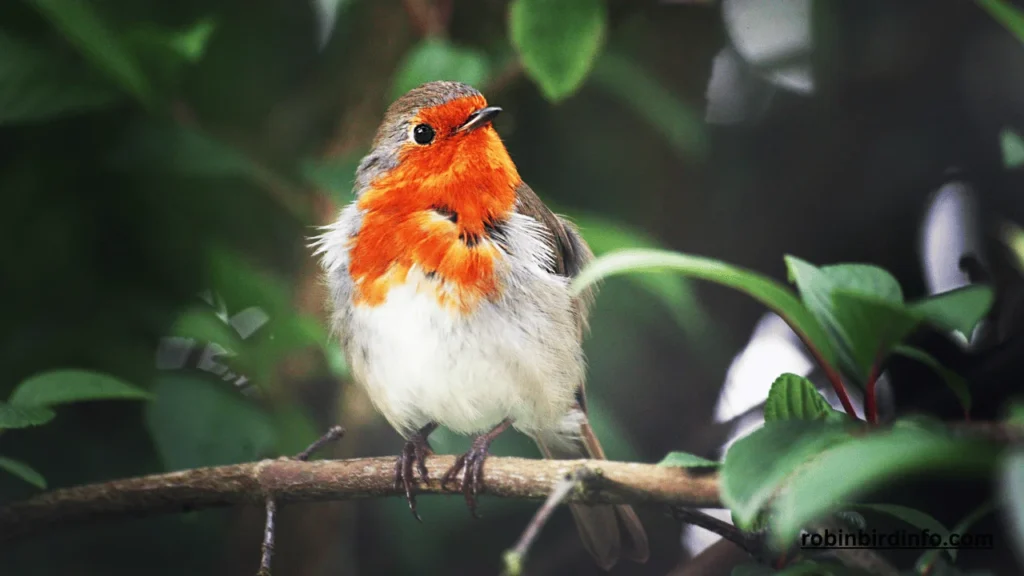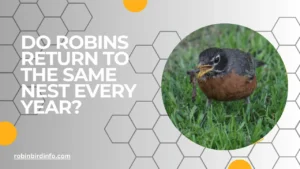We all know the classic image: a Robin perched proudly on a branch, nestled in a cozy cup-shaped home built from twigs and leaves.
It’s a picture of avian domesticity, a symbol of spring and new beginnings. But here’s a question that might ruffle those perfectly crafted feathers: Do Robins ever lay their eggs on the ground?
It might sound strange, like finding a fish perched on a tree branch. Robins are usually associated with building their nests in safe, elevated locations like trees and shrubs. However, believe it or not, there are rare occasions when these familiar red-breasted birds might defy expectations and choose a ground-level nesting site.
This unexpected behavior raises a whole host of questions: Why would a Robin take such a risky gamble? What challenges do they face when nesting on the ground? And what can we do to help these feathered friends survive in these unconventional homes?
So, buckle up and ditch the image of the perfectly placed Robin nest – we’re about to delve into the fascinating, and sometimes surprising, world of Robin nesting behavior!
Contents
- 1 Section 1: Typical Nesting Behavior of American Robins
- 2 Section 2: Ground Nesting in Robins: Rare but Possible
- 3 Section 3: The Role of Habitat and Environmental Factors
- 4 Section 4: Conservation Implications
- 5 Section 5: The Future of Robin Nesting Behavior
- 6 Conclusion
- 7 FAQ’s
- 7.0.1 Why do Robins build their nests in unusual places?
- 7.0.2 How long does it take to build a Robin’s nest?
- 7.0.3 How many eggs do Robins typically lay?
- 7.0.4 How long is the incubation period for Robin eggs?
- 7.0.5 What are the common predators of Robin nests?
- 7.0.6 How can I protect Robin nests in my yard?
Section 1: Typical Nesting Behavior of American Robins
Preferred Nest Sites: American Robins are known for their preference for elevated nest sites, such as trees, shrubs, and man-made structures like birdhouses. They often choose locations that offer protection from predators and harsh weather conditions.
Nest Construction: Robins construct their nests using a variety of materials, including twigs, grasses, leaves, and mud. The female Robin builds the nest, carefully weaving the materials together to form a cup-shaped structure.
Nest Placement: Several factors influence the placement of a Robin’s nest. These include the availability of suitable nesting materials, the presence of predators, and the proximity to food and water sources. Robins often choose nest sites that offer good visibility and easy access to their young.
Section 2: Ground Nesting in Robins: Rare but Possible
While ground nesting is not the norm for American Robins, it can occur under certain circumstances. Lack of suitable tree or shrub nesting sites may force Robins to choose ground-level locations.
Additionally, the presence of dense ground cover, such as thick shrubs or tall grasses, can provide some protection for ground nests.
Ground-nesting Robins face increased risks from predators, including cats, raccoons, and snakes. To compensate for these risks, ground-nesting Robins may adopt more vigilant parenting strategies, such as spending more time incubating their eggs and protecting their young.
Section 3: The Role of Habitat and Environmental Factors
Habitat loss and fragmentation can significantly impact Robin nesting behavior. The loss of suitable nesting sites, such as trees and shrubs, can force Robins to choose less ideal locations, including the ground.
Climate change can also influence Robin nesting behavior. Changes in temperature and precipitation patterns may affect the timing of breeding and the availability of food and nesting materials. Extreme weather events, such as storms and floods, can also damage nests and disrupt breeding efforts.
Human activities can have a significant impact on Robin nesting behavior. Gardening and landscaping practices, such as removing natural vegetation and using pesticides, can reduce the availability of suitable nesting sites and food sources.
Section 4: Conservation Implications
To protect ground-nesting Robins, it is important to create and maintain bird-friendly habitats. This includes planting native trees and shrubs, providing nesting boxes, and avoiding the use of harmful pesticides.
Citizen science and nest monitoring can help researchers track Robin nesting behavior and identify potential threats. By reporting nest locations and monitoring nest success, citizen scientists can contribute to conservation efforts.
Education and awareness are crucial for protecting ground-nesting Robins. By educating the public about the importance of these birds and the challenges they face, we can inspire people to take action to protect them.
Section 5: The Future of Robin Nesting Behavior

Robins are adaptable birds and can adjust their nesting behavior to changing environmental conditions. However, continued habitat loss and climate change pose significant threats to their populations.
Human intervention can both positively and negatively impact Robin nesting behavior. By providing artificial nesting sites and reducing the use of pesticides, we can create more favorable conditions for Robins. However, human activities, such as mowing lawns and trimming shrubs, can also disrupt nesting efforts.
Long-term monitoring of Robin populations and nesting behavior is essential to track trends and identify potential threats. By understanding the factors that influence Robin nesting behavior, we can develop effective conservation strategies to protect these beloved birds.
Conclusion
While ground nesting is not the norm for American Robins, it highlights the adaptability and resilience of these birds.
By understanding the factors that influence their nesting behavior and taking steps to protect their habitats, we can ensure that these charming birds continue to grace our landscapes for generations to come.
FAQ’s
Why do Robins build their nests in unusual places?
Robins typically prefer to build their nests in sheltered locations, such as trees, shrubs, or on man-made structures. However, in some cases, they may choose ground-level nesting sites due to a lack of suitable elevated locations or the presence of dense ground cover.
How long does it take to build a Robin’s nest?
The time it takes to build a Robin’s nest can vary, but it typically takes several days. The female Robin is primarily responsible for nest construction.
How many eggs do Robins typically lay?
Robins typically lay 3-4 eggs per clutch.
How long is the incubation period for Robin eggs?
The incubation period for Robin eggs is approximately 12-14 days.
What are the common predators of Robin nests?
Common predators of Robin nests include cats, snakes, squirrels, and birds of prey.
How can I protect Robin nests in my yard?
To protect Robin nests, you can create a bird-friendly environment by planting native shrubs and trees, providing clean water sources, and avoiding the use of pesticides. Additionally, you can deter predators by installing fencing or using deterrents like reflective tape.








